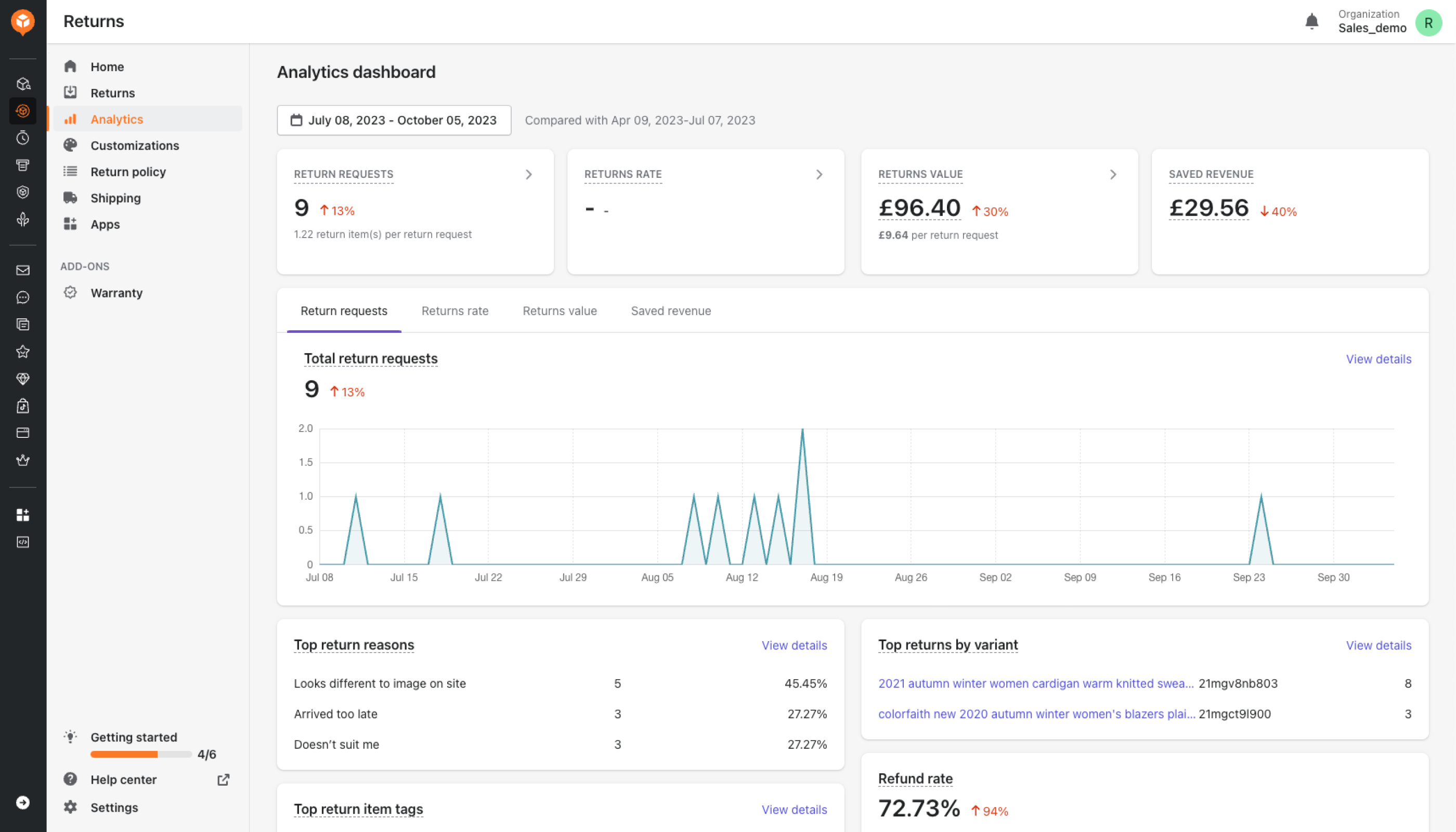
AfterShip Returns: Complete Buyer's Guide
AI-powered returns management platform
AfterShip Returns positions itself as an AI-powered returns management platform specifically designed for mid-market ecommerce retailers seeking automated returns processing and revenue recovery through exchange optimization. The platform delivers native Shopify integration capabilities with AI-driven fraud detection and exchange recommendations, targeting the gap between basic returns tools and enterprise-grade solutions.
Market Position & Maturity
Market Standing
AfterShip Returns occupies a strategic mid-market position within the returns management ecosystem, targeting the gap between basic returns tools and enterprise-grade solutions through accessible pricing and Shopify-focused integration capabilities.
Company Maturity
The company demonstrates operational maturity through established customer base and documented implementation patterns, with proven deployment timelines averaging 4-6 weeks for SMB implementations and 8-26 weeks for enterprise deployments depending on ERP integration complexity[48][54].
Strategic Partnerships
The vendor's strategic partnerships center primarily on Shopify ecosystem integration, with limited evidence of broader technology partnerships or enterprise channel relationships that typically characterize mature B2B software vendors.
Longevity Assessment
Long-term viability indicators include sustained customer relationships and documented ROI achievement, though financial stability metrics, funding status, and growth trajectory information remain limited in available research.
Proof of Capabilities
Customer Evidence
Marc Nolan's implementation represents the most comprehensive success case, achieving 97% reduction in returns processing time (from 35 hours to 1 hour weekly) while maintaining 49% exchange rates compared to industry average of 25%[52][58]. Fellow's enterprise implementation validates the platform's scalability for larger operations, demonstrating 52% reduction in resolution time (from 14.46 to 7.52 days) and 20% revenue recapture through AI-driven store credit conversions[57].
Quantified Outcomes
Revenue retention capabilities show consistent performance across implementations, with the platform's exchange optimization engine achieving documented success in converting potential refunds into revenue-positive outcomes. The 20% revenue recapture rate through store credit conversions represents significant improvement over traditional refund-only approaches that result in 100% revenue loss[57].
Market Validation
Market validation extends beyond individual case studies through documented customer retention and sustained performance improvements over multi-year periods.
AI Technology
AfterShip Returns builds its technology foundation on AI-powered automation specifically designed for ecommerce returns workflows, with particular strength in exchange optimization and fraud detection capabilities.
Architecture
The platform's technical architecture emphasizes API-first design with native Shopify integration providing pre-built workflows that reduce implementation complexity compared to generic solutions.
Primary Competitors
Primary competitors include Loop Returns for Shopify-focused solutions, ReturnGO for fraud detection capabilities, and enterprise platforms like Optoro for high-volume operations.
Competitive Advantages
Competitive advantages center on implementation simplicity for Shopify merchants, proven exchange optimization achieving 49% exchange rates versus industry average of 25%, and accessible pricing starting at $23 monthly compared to enterprise solutions requiring $100k+ annual investments[52][58][28][30][37].
Market Positioning
Market positioning reflects strategic focus on the underserved mid-market segment where retailers need enterprise-grade automation but cannot justify enterprise-level investments.
Win/Loss Scenarios
Win scenarios favor AfterShip Returns when buyers prioritize Shopify integration, exchange optimization, and mid-market pricing over advanced analytics or multi-platform compatibility. Loss scenarios occur when buyers require advanced predictive analytics, multi-platform integration, or physical logistics infrastructure.
Key Features

Pros & Cons
Use Cases
Integrations
Pricing
Featured In Articles
Comprehensive analysis of Returns Management for Ecommerce for Ecommerce businesses and online retailers. Expert evaluation of features, pricing, and implementation.
How We Researched This Guide
About This Guide: This comprehensive analysis is based on extensive competitive intelligence and real-world implementation data from leading AI vendors. StayModern updates this guide quarterly to reflect market developments and vendor performance changes.
60+ verified sources per analysis including official documentation, customer reviews, analyst reports, and industry publications.
- • Vendor documentation & whitepapers
- • Customer testimonials & case studies
- • Third-party analyst assessments
- • Industry benchmarking reports
Standardized assessment framework across 8 key dimensions for objective comparison.
- • Technology capabilities & architecture
- • Market position & customer evidence
- • Implementation experience & support
- • Pricing value & competitive position
Research is refreshed every 90 days to capture market changes and new vendor capabilities.
- • New product releases & features
- • Market positioning changes
- • Customer feedback integration
- • Competitive landscape shifts
Every claim is source-linked with direct citations to original materials for verification.
- • Clickable citation links
- • Original source attribution
- • Date stamps for currency
- • Quality score validation
Analysis follows systematic research protocols with consistent evaluation frameworks.
- • Standardized assessment criteria
- • Multi-source verification process
- • Consistent evaluation methodology
- • Quality assurance protocols
Buyer-focused analysis with transparent methodology and factual accuracy commitment.
- • Objective comparative analysis
- • Transparent research methodology
- • Factual accuracy commitment
- • Continuous quality improvement
Quality Commitment: If you find any inaccuracies in our analysis on this page, please contact us at research@staymodern.ai. We're committed to maintaining the highest standards of research integrity and will investigate and correct any issues promptly.